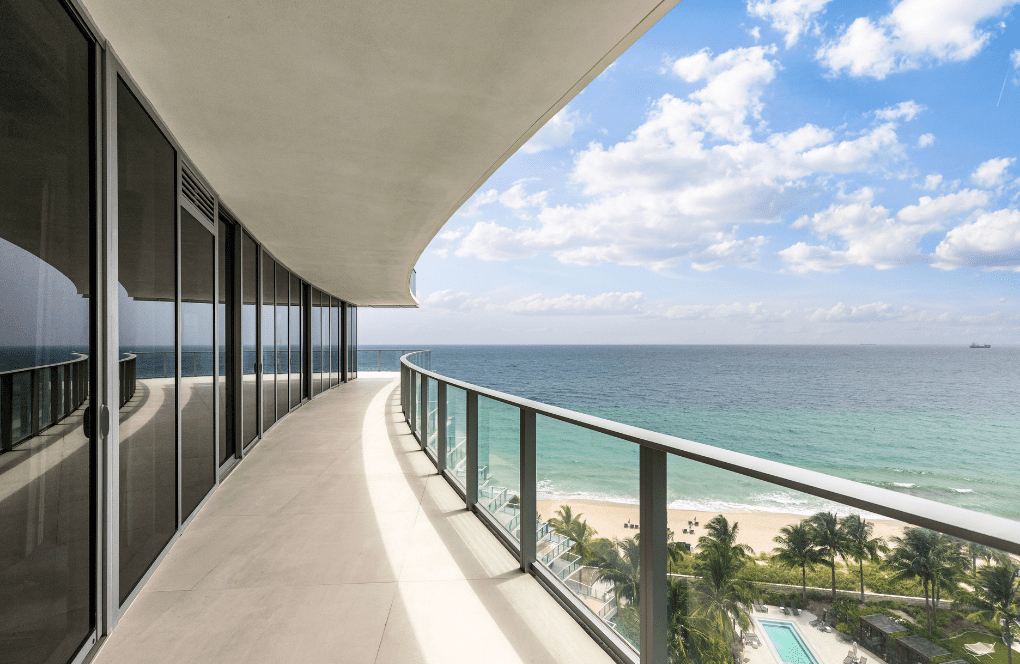
Understanding ASTM Guidelines: Expectations and Glass Defects
Glass is an essential component in architecture and construction. This is why its quality is regulated by industry standards to ensure reliability and performance. The American Society for Testing and Materials (ASTM) establishes guidelines that define acceptable tolerances for imperfections in glass. These standards help any supplier, hurricane-proof windows manufacturer, and consumer understand what qualifies as a defect and what falls within the acceptable range of variation. Keep reading to get an overview of ASTM’s standards for glass imperfections and how they apply to the luxury building and construction industry.
ASTM Standards for Glass Quality and Inspection
ASTM provides a framework for evaluating glass quality by specifying allowable defects, inspection criteria, and coating quality requirements. The organization establishes multiple standards, including:
- ASTM C1036-16: Standard specification for flat glass, requiring Q3 or glazing select specifications or better.
- ASTM C1048-92: Specification for heat-treated glass, including coated and uncoated glass, using Q3 quality or better.
- ASTM C1376-97: Standard specification for pyrolytic and vacuum deposition coatings on glass, with kind CV specifications or better.
- ASTM C1908-21: Standard test method for pummel adhesion testing of two-ply laminated architectural glass.
- ASTM C1172-24: Standard specification for laminated architectural flat glass.
These guidelines define how glass should be inspected, including requirements for lighting, distance, and viewing angles to ensure uniformity and quality. This ensures that any defects, distortions, or irregularities are identified consistently, maintaining the required standards for clarity, durability, and overall product quality.
Visual Inspection Criteria
Inspection standards specify how glass should be evaluated for imperfections. ASTM criteria include:
- Viewing Distance: Inspectors must assess glass from a distance of 10 feet for overall visibility and 5 feet for specific central area evaluations.
- Viewing Angle: Glass must be viewed straight-on at 90 degrees to ensure accurate assessment.
- Lighting Conditions: Glass is inspected in daylight, avoiding direct sunlight or using a light source with 500–1000 foot-lamberts.
- Inspection Time: Observers must assess glass within 5 to 20 seconds, depending on its size.
Defining a Defect Under ASTM Standards
A key question in the industry is: When is a defect, not a defect? ASTM standards define a defect based on whether it is visible under specified inspection conditions:
- Stand 10 feet away.
- View the glass straight-on at 90 degrees.
- Inspect in daylight but not in direct sunlight.
- Assess only the central 80% of the glass.
If the defect is not visible under these conditions, it does not qualify as a defect under ASTM standards.
ASTM Standards for Allowable Defects
Glass is not entirely free from imperfections. ASTM guidelines define allowable defect sizes and frequencies based on the surface area of the glass. The primary categories include:
Glass Lites Up to 6 Square Feet
- Scratches: Maximum of 1 inch, no more than one per lite.
- Debris, Dirt, Spots: Maximum 1/16 inch, no more than one per lite.
- Seeds, Bubbles, Knots, Stones: Maximum 1/16 inch, no more than one per lite.
- Shells: No more than ¼ inch from the edge, must be less than half the glass thickness, and limited to one per side.
- Chips: No more than 1/8 inch from the edge, limited to one per side.
- Coating: Must be uniform when viewed under standard inspection conditions.
Glass Lites 6 to 35 Square Feet
- Maximum two scratches, two debris spots, and two seeds, bubbles, knots, or stones, all separated by at least 24 inches.
- Other defect allowances remain the same as for smaller lites.
Glass Lites Over 35 Square Feet
- Maximum three scratches, three debris spots, and three seeds, bubbles, knots, or stones, all separated by at least 24 inches.
- Other defect allowances remain consistent with smaller lites.
ASTM standards provide clear guidelines for glass quality, helping a hurricane-proof windows manufacturer and consumers establish realistic expectations for imperfections. In many cases expectations are particularly high, therefore, understanding these standards is essential for evaluating glass quality and ensuring compliance. By following ASTM guidelines, businesses can manage quality control effectively while maintaining industry best practices.
